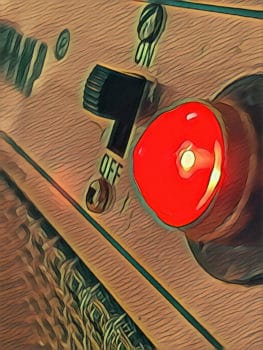As an Amazon Associate Playpedalsteel.com earns from qualifying purchases. This page contains affiliate links.
Most pedal steels are single neck or double neck guitars, which utilize the E9 and C6 tunings respectively. However, there is a universal pedal steel tuning that usually uses 12 strings, which has a tuning and copedent that essentially combines characteristics of both the E9 and C6 tunings.
The universal tuning adopts the lower bass strings of the C6 tuning, along with wider chord voicings, while still staying true to the E9’s use of pedals and levers to create licks and glissandos.
Many universal tunings and copedents will have about 8 foot pedals, and 5 knee levers for the tuning. Let’s find out more about what makes the universal tuning a go-to for various pedal steel players…
The Tuning of the Strings
Although universal tunings are highly customizable (many players put their own custom touches on the tuning), many follow a similar string tuning. Oftentimes, strings 8-1 are exactly the same tuning on the open strings as the standard E9 tuning.
However, strings 12-9 will often follow an open E chord’s tuning. For instance strings 12-9 (in this order) are usually tuned to B, E, G#, & B notes.
This gives deeper resonance and voicings for your typical E9 tuning and playing, but you can also utilize the pedals and levers to alter the tuning to have more C6 (or B6) characteristics.
The Copedent of Universals
The universal tuning’s copedent can vary between different players and ways of tuning the universal setup. However, many universal pedal steels will have a lot in common for their copedents. This makes the universal copedent and setup more standardized in ways, and easier to learn and relate to.
Click here for a list of common copedents of universal pedal steel tunings.
Notice how many universal tunings and setups will utilize a vertical knee lever that locks into place (to change the tuning to a more 6th like tonality). This usually just holds the E lower change into a locked, fixed position (the 8th and 4th strings are lowered from E to Eb notes).
The Pedal and Knee Levers
If you look at the universal copedent, then it becomes evident that pedals 1-3 have the same changes as your typical Emmons E9 copedent. However, once the B6 tuning is engaged (usually with the vertical lock knee lever), pedals 5-8 act very similarly to their relative pedals on a C6 neck’s tuning.
The ability for pedals 1-3 to work well for the E9 style of playing, and pedals 5-8 to work well for C6 sounds, is what makes the universal tuning an applicable hybrid of the two tunings. The common uses of the E to F raises, and E to Eb lowers of the E9 tuning, are still found on the universal copedent’s left knee levers.
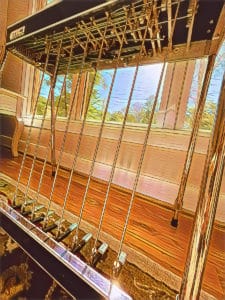
When deciding to use the B6 pedals for playing, it is usually a good idea for a player to shift their foot position to hover over these pedals primarily. Usually pedals 5 and 6 are a good place to position your foot for this, and then you can shift it to pedals 4, 7, or 8 when they are needed.
Players and Advocates of the Universal Tuning
Maurice Anderson and Jeff Newman helped pioneer and advocate the universal tuning. Both of these players were intuitive in their ways of teaching and playing pedal steel, so they helped greatly in spreading the advantages and knowledge that is offered through the universal tuning.
Many other great players over time have experimented with the universal tuning, to see how it fits with their style of playing. Although there are many advantages and disadvantages to using the tuning, many players opt back to the standard E9 and C6 setups because of their familiarity.
If you decide to play a universal pedal steel tuning and copedent, then it may be helpful to remember that there will be a learning curve for it. It will take some time, patience, and practice to adapt your playing to the tuning. However, if you can find advantages to the tuning that you can’t find elsewhere, then it may be worth sticking with for your playing.
Pros of the Universal Tuning
One immediate advantage of the universal tuning is that it allows you to play a single neck guitar, while utilizing both of a double neck pedal steel’s necks and tunings. This usually makes a universal pedal steel a single neck that is much lighter than most double neck pedal steel guitars.
Also, being able to switch quickly between the E9 and C6 styles of pedal steel playing on a single neck (universal tuning) pedal steel can open up playing opportunities.
These opportunities are usually there with double neck pedal steels, however it always takes some amount of time (usually seconds) to switch neck and foot positions on a double neck guitar. You may be able to lower this amount of time for switching between the styles by using just a universal tuning.
Cons of the Pedal Steel’s Universal Tuning
If you’re used to playing the E9 and/or C6 pedal steel tunings, then it may feel awkward and cumbersome to try and combine these tunings into one neck. This will usually require some extra practice time to feel more comfortable with the universal tuning, however this may deter some players from exploring the tuning more deeply and adeptly.
Also, it may take effort to try and locate a universal tuning pedal steel to play and practice on. If you are able to find one in good working condition, then you’ll likely need to purchase it if you’d like to play it consistently.
Conclusion
Playing a universal tuning pedal steel guitar takes curiosity and initiative. If you’re willing to explore the possibilities that the tuning has to offer, you’ll likely discover new reasons why the universal tuning has continued to pave certain paths for pedal steel guitar.
Some great players have hinted about the exciting possibilities of using universal tuning pedal steels, however few players actually take the time to explore what the tuning truly has to offer.
Thanks for checking out this page, hope it is helpful and makes playing more enjoyable! If you’re interested in diving deeper into playing E9 pedal steel, check out these resources and guides…
The Chord Guide for E9 Pedal Steel (E-Book, Digital Download)
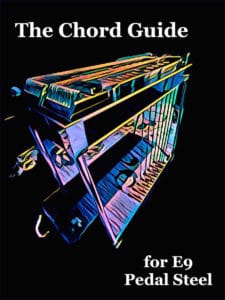
Learn the chords on the E9 neck in a way that makes playing simple and enjoyable…
- Almost Every Chord You’ll Ever Need for E9
- Intuitive and Easy to Use
- Make Use of Pedal and Lever Combinations
- Example Tabs of Chord Movements
- Easily Utilize the Nashville Number System
- Great For Any Key and Style of Music
Includes a bonus section of over a hundred pages of extra chord charts, key references, and more!
Playing Pedal Steel:
The Essentials
An easy and intuitive approach to mastering the pedal steel…
- An in-depth look at bar control, the right hand, using pedals, & the volume pedal
- Multi Angle Views – that you can always reference.
- Ways to Practice, How to Practice, What to Practice.
An online pedal steel lesson series – includes a free pedal steel EBook!
More Digital Downloads for Pedal Steel…
The Scale Book for E9 Pedal Steel
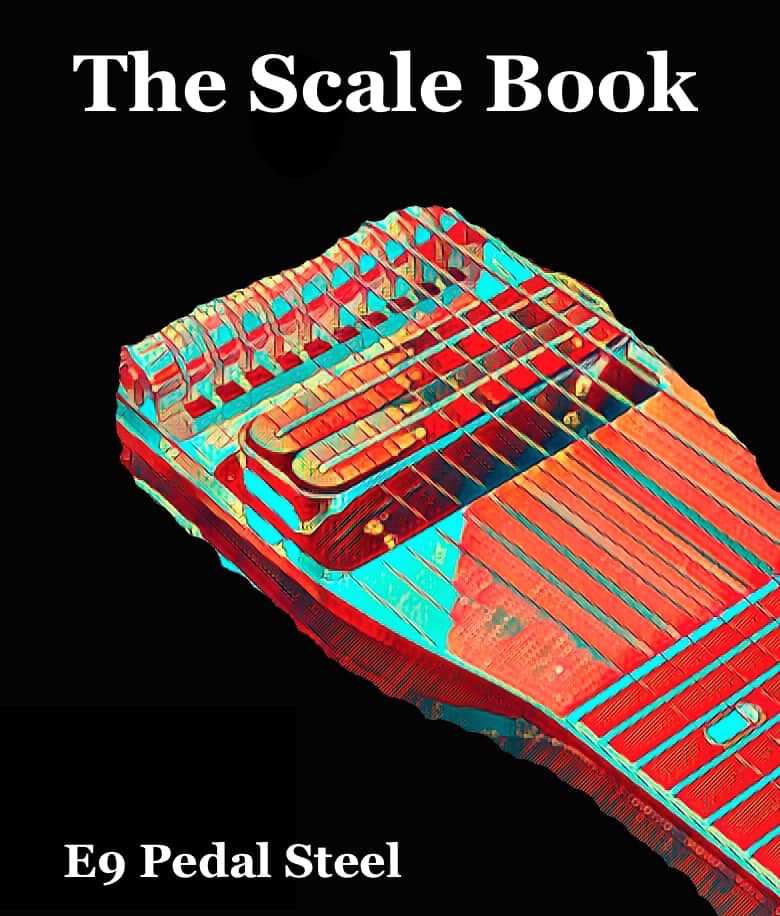
Over 1,000 Pages with Tabs and Diagrams!
- Easy to Use Reference for Practicing
- All Major and Minor Pentatonic Scales, Modes, Major Scales
- All Keys, and Covers the Fretboard
- Includes Pockets of Scales
The Art of Right Hand Technique
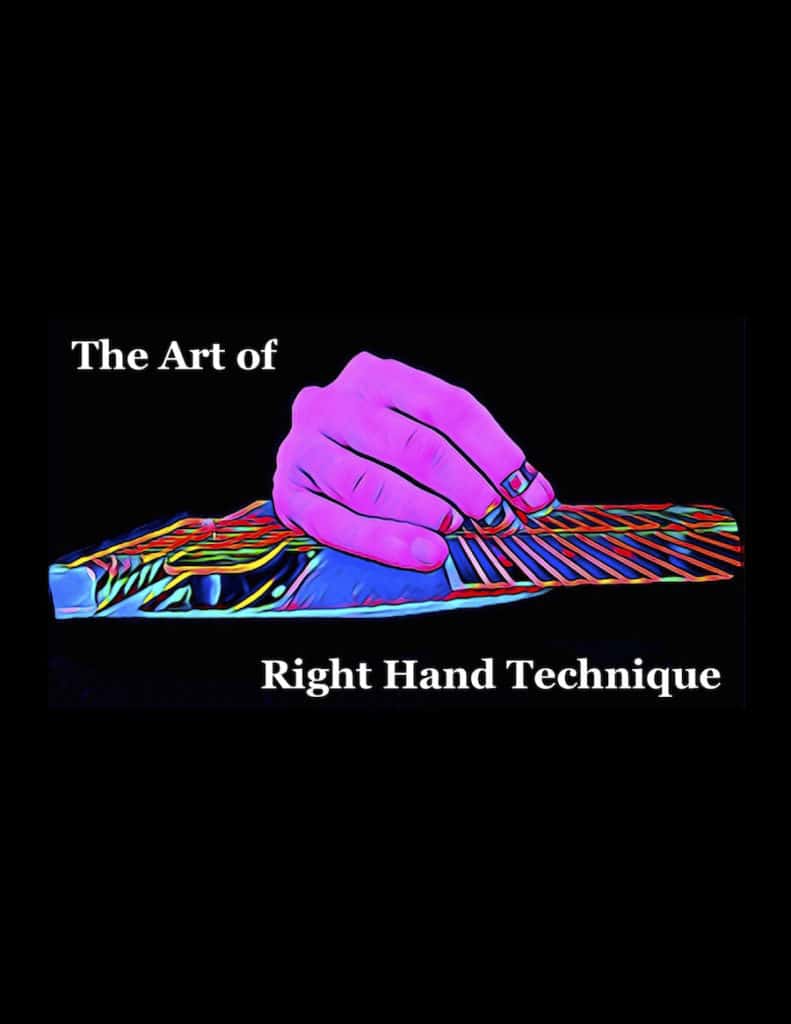
A detailed look at one of the most challenging and mysterious aspects of steel guitar playing: the right hand…
- An In-Depth Guide to Picking and Blocking
- How to Efficiently and Accurately Play Notes on Steel Guitar with Info, Advice, and Tips…
- Great for Pedal Steel, Lap Steel, and Console Steel Guitar
- Over 100 Pages with Graphics, Illustrations, & Practice Exercises
200 Country Riffs & Licks for E9 Pedal Steel
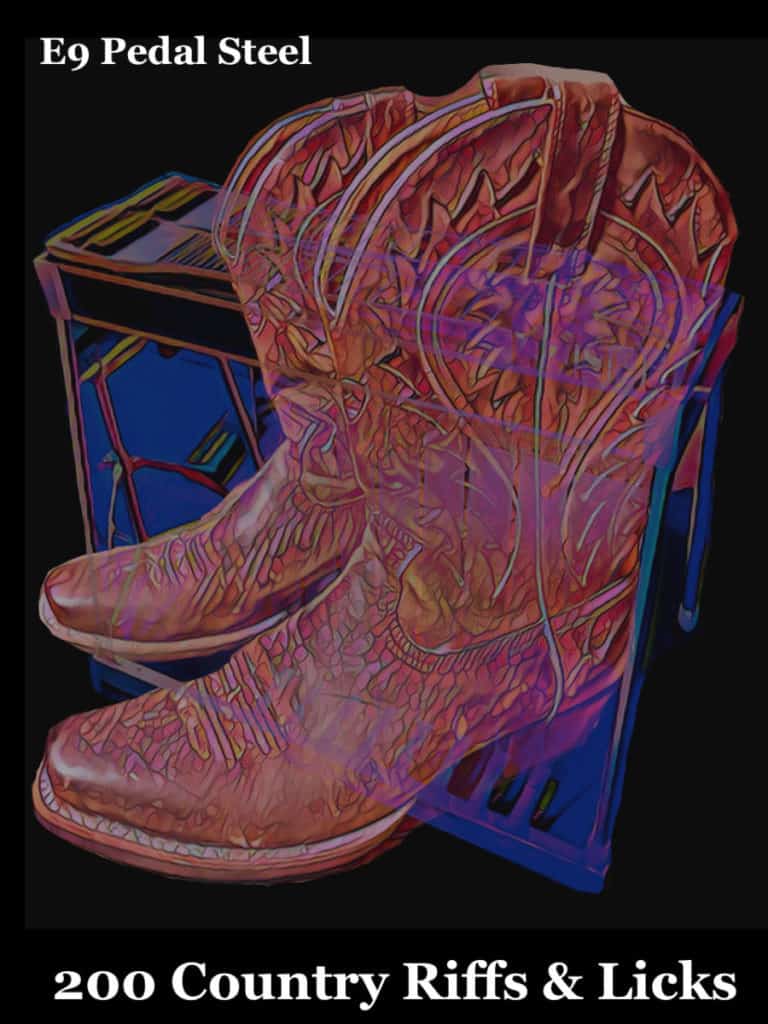
Add these country licks to your playing repertoire…
- Easy to Read Format
- Includes Rhythmic Notation
- Playing Over Chord Changes
- Great for Country, Alt-Country, & Honky-Tonk Styles
